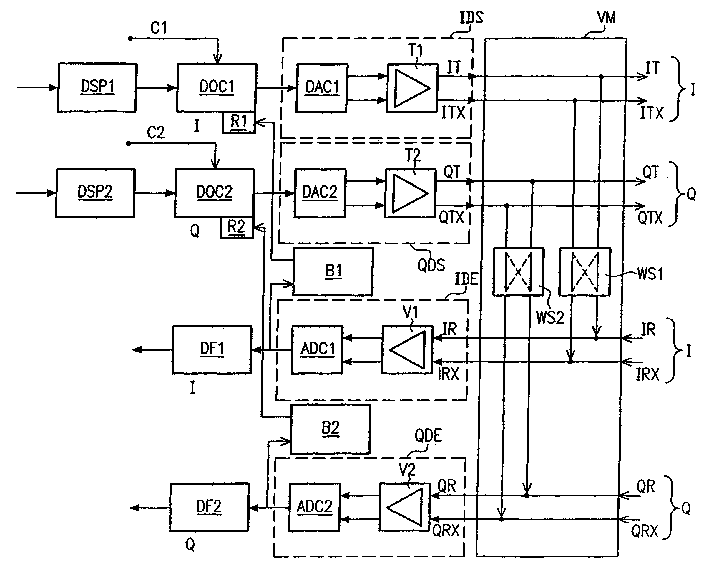Determination of differential offset in radio device
A radio equipment, differential technology, applied in the field of measuring an offset value, which can solve problems such as environmental constraints and long time that cannot be considered in terms of component aging.
- Summary
- Abstract
- Description
- Claims
- Application Information
AI Technical Summary
Problems solved by technology
Method used
Image
Examples
Embodiment Construction
[0016] figure 1 Shows the structure of a baseband signal processing unit of a mobile radio device, such as a unit implemented in a baseband chip, in the form of a simplified block diagram. The transmission path in the signal processing unit includes an I (in-phase) branch, the first digital signal processor DSP1, the output of which is fed to the input of the first digital offset correction circuit DOC1. The data of DOC1 can be sent to the correction value register R1. An output of DOC1 can be fed to the input of the first digital-to-analog converter DAC1. DAC1 converts the incoming discrete-valued transmit signal (from the I branch) into two analog, differential transmit signals. The difference between the two signals in the differential transmit signal (regardless of the offset produced in DAC1) corresponds to the value of the signal at the input of DAC1.
[0017] Two analog, differential transmit signals are sent to the first driver T1. The first driver T1 performs sign...
PUM
 Login to View More
Login to View More Abstract
Description
Claims
Application Information
 Login to View More
Login to View More - R&D
- Intellectual Property
- Life Sciences
- Materials
- Tech Scout
- Unparalleled Data Quality
- Higher Quality Content
- 60% Fewer Hallucinations
Browse by: Latest US Patents, China's latest patents, Technical Efficacy Thesaurus, Application Domain, Technology Topic, Popular Technical Reports.
© 2025 PatSnap. All rights reserved.Legal|Privacy policy|Modern Slavery Act Transparency Statement|Sitemap|About US| Contact US: help@patsnap.com



